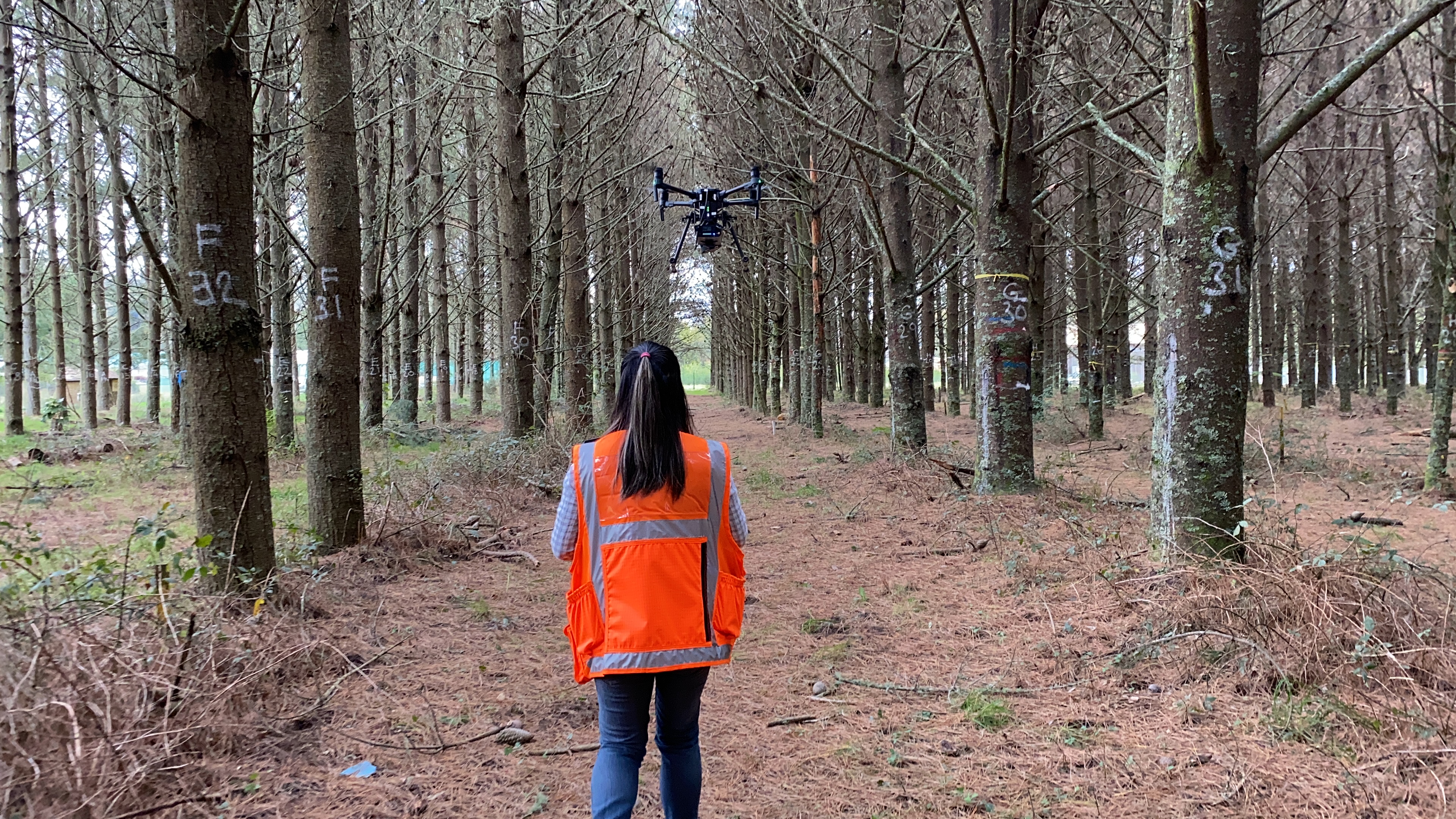Scion celebrates 10 years of UAV research

This year marks a decade since Scion adopted unmanned aerial vehicles (UAVs) as a research tool – forging a path towards more effective forest management.
A pioneer in the field of UAV research, the Crown Research Institute bought its first drone in February 2015. Since then, UAVs have become a key tool for aerial data capture, for use in high-definition mapping and monitoring of forests. Scion also uses them for 3D modelling, sample collection, sub-canopy data captures and various types of imaging across multiple programmes.
It is the only Crown Research Institute with Civil Aviation Authority Part 102 higher tier certification, which enables it to undertake UAV activity outside what standard operational licences allow. Scion scientist Robin Hartley says UAVs add a lot of value to the organisation’s research. “We regularly capture high-definition LIDAR for measuring trees. We can get ultra high-resolution maps of stands and trials, we are capturing spectral and thermal data to understand more about tree physiology remotely, and we’re working with companies to develop UAV spray systems specific to forestry needs. We’re also exploring niche areas such as sub-canopy flying for characterising stem and branch structure and collecting upper canopy samples.”
The autonomous systems team has worked with other teams across Scion and industry over the past 10 years to enable them to adopt UAV technologies. “There is plenty of potential for UAVs to be used for other purposes within research and commercial forest management, too, such as forest inventory, phenotyping and manual applications such as spraying and planting,” Robin says.
It all started in 2012, when research group leader David Pont was a scientist monitoring the development of UAVs and miniaturised laser scanning technologies. By 2015 a commercially available scanner had been matched to a drone from Aeronavics, a NZ-based UAV company working with the Hollywood film industry. At the time, a geomatics team was being formed at Scion that comprised scientists with expertise in airborne LiDAR. A state-of-the-art LidarPod weighing 3kg was bought from Scotland, and the Scion team ordered the largest UAV they could find to carry it. This UAV gave Scion a modern way to laser scan forest stands.
Scion staff Toby Stovold, Kane Fleet and Marie Heaphie (who has since left the organisation), learned to fly a small UAV, which meant when the larger craft arrived they were ready to deploy it for forestry research.
The wider industry took notice as the technology continued to develop. Several forestry companies have since invested in trials and built their own in-house UAV capacity. The strong industry adoption was highlighted in a 2020 study that showed 83 percent of forestry companies in NZ use UAVs to capture aerial imagery, compared to none in an earlier 2013 survey.
Scion also helped set up the Tools for Foresters (TFF) industry initiative, which connects researchers and foresters using UAVs in forests to share research, knowledge and resources. This helps enhance UAV technology development and encourage adoption of these tools.
Timberlands inventory manager Michael Wilson says Scion’s work with UAVs over the past decade has helped shape how his company uses the technology in forest management operations. “Scion’s work helped us see what was possible with drone technology – from precision aerial mapping to advanced canopy analysis – and gave us the confidence to invest in UAVs ourselves. It’s hard to imagine modern forest management without them now.”
Robin says Scion continues to work with forest managers to develop systems that are relevant and cost-effective. “A recent survey showed a 20 percent increase across some key UAV uses that have been developed and promoted through TFF.”
Scion’s autonomous systems team is focused on advancing techniques for the capture and use of LiDAR, photogrammetry and thermal and multi-spectral imagery.
